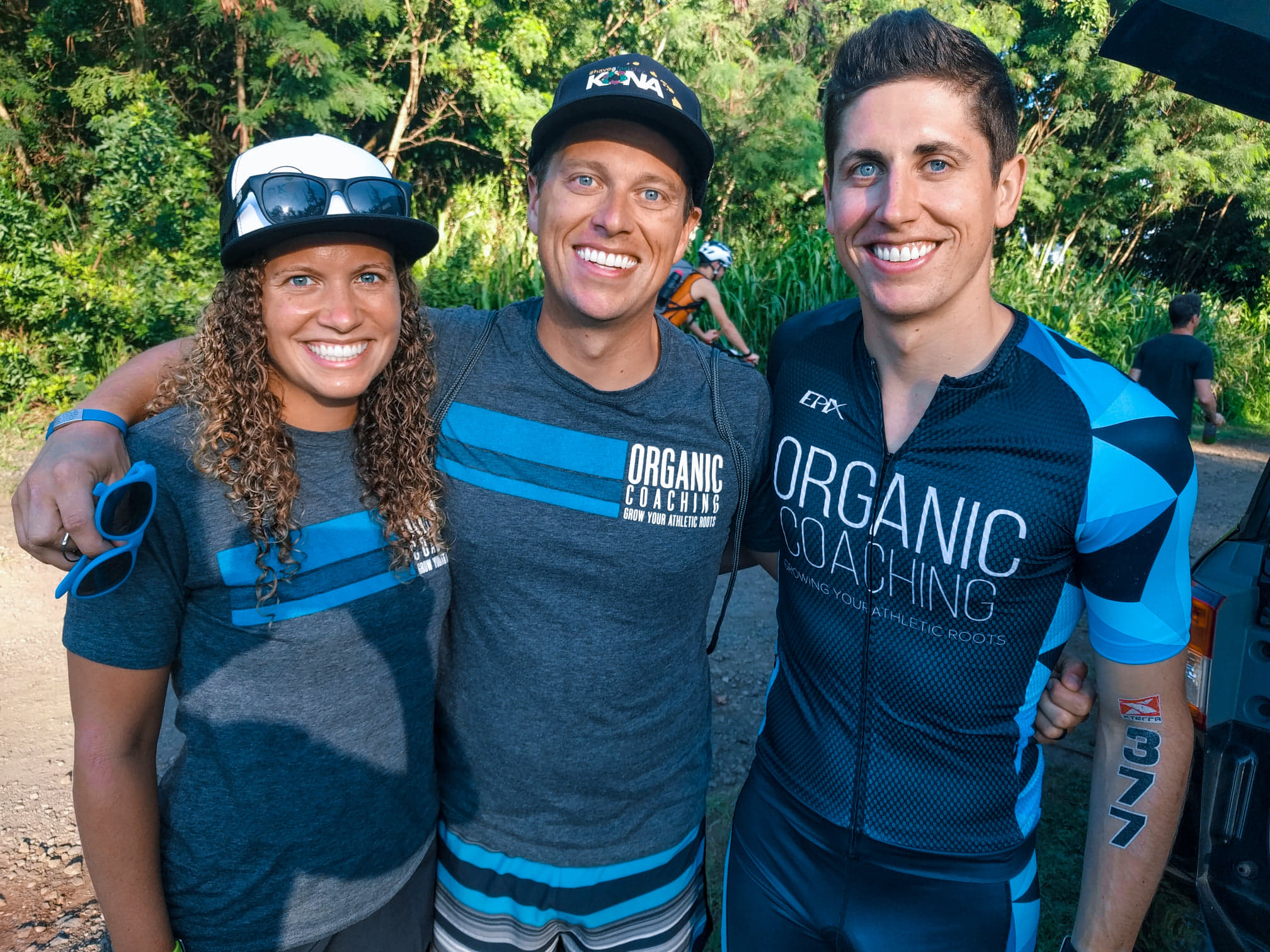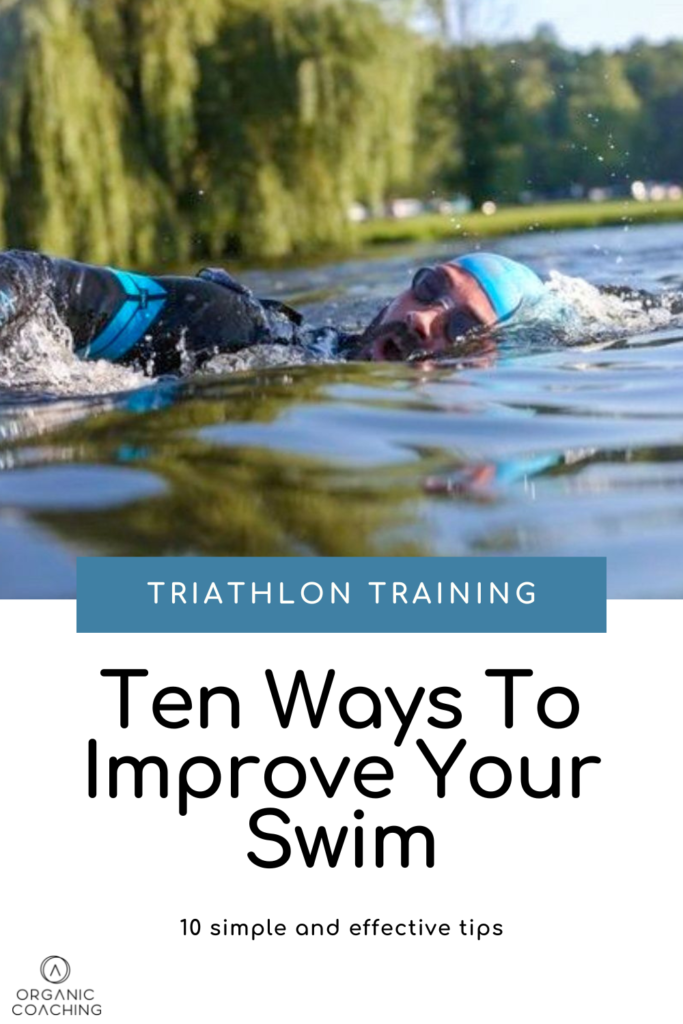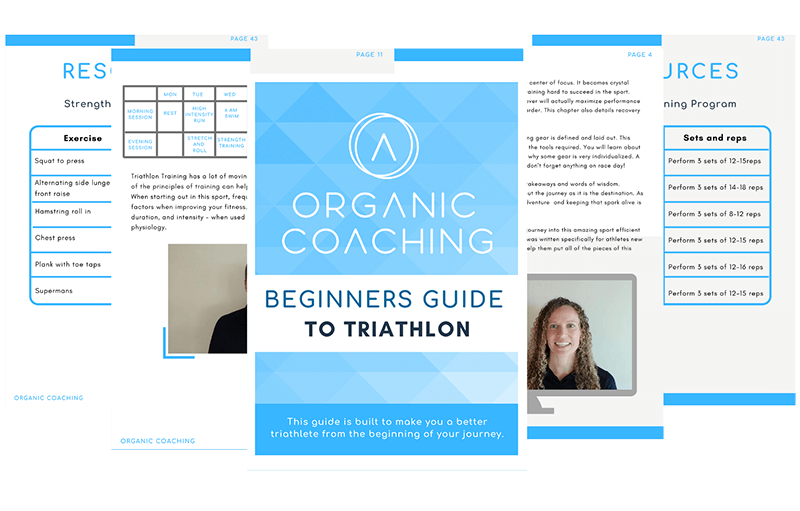

In triathlon, the vast majority of us come into the sport through some gateway activity. Maybe as a runner, you were seeking a way to stay injury free so you introduced cross-training with the bike. Or maybe as a cyclist, you had a friend invite you to a local tri and you pulled yourself together to do some swimming and running. The rarest pathway seems to be a swimmer turned triathlete, not completely unheard of but less common. Certainly, there are stellar swim clubs and programs throughout the world that help cultivate outstanding swim athletes starting at a very young age. The fact remains that for most of us, we learned to swim later in life. Along with that comes a big challenge and struggle. We will dive into ways to improve your overall swim.
With biking and running, aside from good fit and basic form tweaks. We can continually improve without too much technique or coordination required. Oftentimes, simply progressing your training on the bike or run will yield better performance. Swimming couldn’t be further from that reality. Stick the fittest (non-swimming) person you know in a pool and ask them to swim 100 yards without stopping. You’ll likely watch them flounder and gasp for air as they reach each end of the pool. Swimming requires an immense amount of body control, technique, and strength, with an emphasis on the former two. That is, even with tremendous power, a lack of body positioning and form will yield less than stellar results.
Over the next few months, I’ll be writing a series on swim techniques. Ways to improve your swim performance, and become a triathlete with a confident swim! I thought I’d start with some common problems (and solutions) as well as some overarching mindsets to get you off and swimming happier. Starting with one of the easiest, yet most effective tips there is, eye and head position.
Body positioning is key to a streamlined flow through the water. While we’re actively keeping our upper body high in the water, our lower halves tend to sink quite easily. One very common thing that makes this worse is our head position. As we raise our eyes to look where we’re going or raise to turn our heads to breathe, our hips and legs often drop. So, while there are many contributors to poor body positioning. Keeping your eyes looking down or even backward when your face is in the water can be an easy and quick way to lower this likelihood. Plus improve swim and your body’s overall position in the water.
Triathletes have notoriously inflexible ankles. Whether it be all that running or cycling or the simple fact that our ankles are there to connect our legs and our feet to allow for motion. The natural position of our feet facing out from the body translates to effectively having a built-in anchor while swimming. We want our body to be as flat as possible and inflexible ankles are a common source of significant drag. This also creates a less-than-ideal kicking paddle (picture rowing a boat with a flat oar as compared with a paddle where the endpoints are straight down in the water).
A quick test is to point your toes downward (think ballerina pose) and see how easy or hard it is. If you find it difficult to keep a straight foot (very common), don’t lose hope! There are some more advanced exercises for improving this. Simply doing a few repetitions of flexing your feet downward (with or without resistance) before each swim can help improve that flexibility and translate nearly immediately to better body position, less drag, and overall faster swimming!
The exit phase of the swim stroke is one of the most common oversights by most swimmers and triathletes. We’re often desperate to breathe and start the next stroke only to miss a significant source of power and acceleration. Making sure you’re fully completing the stroke can take some practice but again with some fairly simple intervention you can begin taking advantage of this hidden speed gain. Ideally, your hand will extend to the top of the thigh prior to exiting the water. This may feel extreme when you first do it. You may feel it in your triceps, but stick with it. There are some fancy drills to drive this home. But simply focusing on it for a few swims will have you reaping the benefits asap!
Probably the most common swim stroke struggle is the infamous “crossing the midline.” This is when upon entry your hand crosses over the middle of your head, extending slightly to the other side of your body. This causes all sorts of imbalances in the catch and pull. Which leads to a wide, scissor kicking of the legs, and ultimately slows you down. Another less impactful, but just as important pitfall is this malady makes swimming in a straight line even more difficult than it already is. Thankfully, with some dedicated attention and drill work, you can correct this fairly easily. Contrary to tip number one about the head position, taking some time to watch your hand entry, catch, and pull can be a quick way to see if you’re…
Simpler still is to picture a string coming out from the top of your head. Emphasize not letting your fingers cross that imaginary line. When you first correct it, you may feel like your arm is going out far too wide from your body. Rest assured that fixing this problem will have you swimming more balanced, straighter, and stronger!
Have you ever found yourself seeing how long you can run or bike while holding your breath? Or ever thought, should I breathe every 4 steps or 8 pedal strokes? Chances are the answer is a definitive “N-O!” Rightfully so, yet with swimming, we are forced into a situation where we have to consider this unnatural proposition. We all tend to have a “natural side” when it comes to breathing while swimming. We also want to have a stroke that is balanced and not lopsided. So we might rightfully try out the “bilateral” style where we breathe to both sides.
However, there’s also a tendency to think that it’s the mark of a “better” swimmer to only ever breathe bilaterally. Or worse, try to extend to every fourth or fifth stroke prior to breathing. There is a time for those drills. But in general, as with running and biking, more oxygen is also ways better. Particularly, during hard sets, it’s very much okay to breathe every other stroke with a gentle exhalation in between. Sure, try practicing to your non-natural side as well, but remember to breathe early and often.
Body rotation is a key component of the swim stroke in producing power, propulsion, and speed. But as with anything, more isn’t always better (except the aforementioned breathing). We want to have some amount of natural rotation, and when breathing, it’s mandatory. However, too much rotation leads to an unbalanced stroke that actually leads to many other shortcomings.
Generally, you want to keep rotation somewhere between 35 and 45 degrees (imagine shoulder to shoulder pointing to the middle of the lane next to you). Where the pivot point is the trunk of your body. You tend to rotate a bit more when breathing, so one easy check is to see if your non-breath side eye stays in the water. To do this, close the breath-side eye (if you breathe right, close your right eye and vice versa for left breathers). If you can see above the water with the open eye (left for right-side breathers), you’re likely over-rotating. This can be a great real-time check on your rotation.
As I’ll mention below, getting a video of your stroke from the front angle can be a surefire way to tell. Perform the goggle eye test on the other side as well to begin correcting rotations on both sides. Though it’s very common to over-rotate more on one side than the other.
Body awareness is something that some people seem to be gifted with (imagine a ballet dancer). Where every small movement of all parts of their body can be visualized, manipulated, and controlled. And then… there’s the rest of us, we think we know what our left foot is doing when we kick, we’re sure our elbow is above our wrist in our catch and pull, but not so much. It’s not until we actually see what we’re doing that we can acknowledge that something needs to change. Let alone understand how to change it.
With swimming, body awareness and technical proficiency can be the difference between a fluid, streamlined position, and one wrought with inefficiencies. Having a friend record videos taken from the top, side, and the front is a complete game changer in ensuring the work you’re putting in is targeted toward your specific needs. Make sure to do this often, every 4-6 weeks to see not only the next problem areas but to determine if the things you’ve been working on have truly improved.
So while you might, hypothetically, read an article about “Ten Ways to Improve Your Swim,” if you’re working on something because you think it’s a problem. Your efforts might be wasted or lead to marginal improvements if you’re working on the wrong things. Getting a video of your stroke, analyzing it, and identifying the most impactful changes that need to be made is one of the best ways to improve your swim.
Swimming is anything but easy, it takes an immense amount of attention to put all of the pieces together in an effective manner. It can be really difficult to remember all the little swim thoughts and think about all the components of the stroke. So, really aim to keep your focus on a small number of areas at once. Allow a new swim thought or idea to become ingrained in your stroke prior to changing more (and use video to confirm). One change can have an impact on other parts of your swimming. So being considerate of that is appropriate as well. Focusing on a small set of changes is crucial to having new motions stick while not overwhelming the mind in the process.
Changes take time and they don’t always lead to faster times. Remember that energy conservation can be just as (if not more) important as increased paces. If you can complete the same swim at the same speed having used less energy, you’re going to be fresher for the bike and run legs to come. As noted above, most of us have a lot we could work on with our stroke. Making changes slowly and methodically is the most effective way to see long-term change, and that takes lots of time and patience. So, embrace the process and recognize this isn’t about quick fixes. Having patience with yourself is a key part of succeeding when on the journey to improve your swim.
When something is challenging or frustrating or intimidating it can be easy to view it as just that. To approach each swim session with dread as if it will likely be a slog from start to finish. While mindset alone won’t suddenly make you a better swimmer. Adjusting your outlook on the discipline can be a key component to making progress and ultimately enjoying the process. Learning to actively say that you want to go for a swim can be a good first step. Swimming with a small group is another way to associate a pleasant community aspect with a hard workout. Whatever your approach, know that working on something you enjoy is always going to yield better results than something you dislike.
Most triathletes are what we call “Lifestyle athletes,” who plan to do this sport not only as a bucket list item but as part of their ongoing lifestyle. So moving from a place of apathy or disdain to happiness or love is crucial. Yes, swimming is complicated, and progress is often hard to see. But finding a love for swimming and reorienting your view to one of enjoyment can truly transform your ability to swim not only improve your swim. But swim stronger and happier.
Happy training and racing!


Carly and Tyler Guggemos built Organic Coaching in 2014 with a simple philosophy that works. The idea is to take what you have and grow it to get faster, fitter and stronger. And to do it with the time you have – not the time you wish you had.

For athletes who are ready to take their training to the next level while still thriving and succeeding in their professional and family life.
Copyright © 2024 Organic Coaching LLC